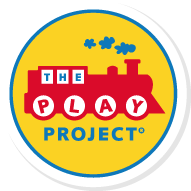 By Ashley Case, OTR/L
By Ashley Case, OTR/L
It’s that time of year again! It’s time for shopping, gift-giving, donating, and accepting gifts. With as much joy as this time of the year brings, there also seems to be an equal amount of uncertainty. The question on every parent, grandparent or family members’ mind is: what kinds of toys are best to give a child with special needs?
Below are some practical tips, suggestions, and resources for how to pick out toys and where to find them. Happy shopping, giving, and playing!
General suggestions:
- Ask the child’s parents, teachers, or therapists for suggestions! You’ll likely get several suggestions for toys, books, therapy equipment, or household items.
- Try to avoid battery-operated toys, especially for children who are difficult to engage. These toys can typically be used without adult support and therefore can promote isolation or repetitive play.
- Be sure to consider the child’s sensory profile, age, and communication style when choosing a gift. Good questions to ask the parents may include: Does your child enjoy physical play or movement? Are there any textures or materials that your child is sensitive to? Does your child communicate primarily through gestures or words? What is your child’s favorite thing to do or play with?
- Try to avoid choosing toys based on solely on the child’s age. Many toys and games list an age-range (e.g. age 2 and up) and these ranges are not typically created with children who have special needs in mind.
Gift Ideas:
- A large bean bag to use as a “crash pad” or a place to sit when the child needs a break
- A small indoor trampoline such as the Jump Smart Trampoline. This is great for the winter time when children spend most of the day indoors!
- Bubbles, a jack-in-the-box, musical instruments, or other cause and effect toys to promote shared joy and interaction.
- Play dough, finger paints, dot-dot markers, large grip markers or crayons with some colored paper. All are good for fine motor control.
- Monster Toss game (by Alex). This is a great activity to work on coordination.
- Give the gift of pretend:
- Fill a Rubbermaid bin with of dress-up clothes (football helmets, top hats, funny shoes, costumes, etc.) -all to promote meaningful pretend play.
- Make or buy hand puppets with various animal heads, dinosaurs, sea creatures, or whatever the child is interested in to promote interactive pretend play.
- Give a picnic basket full of pretend food, pots, pans, utensils, etc.
- Challenging games that are also fun: Electronic Hot Potato game, Hullabaloo, Twister, Don’t Spill the Beans, Guess Who, etc. Remember, there are lots of ways to play without necessarily following the rules to the letter!
- Books! Look for books with animated characters and simple themes that the child can relate to (i.e. books about family, emotions, riding the bus to school, going to the dentist, playing with siblings, etc.). Of course, don’t forget about the child’s favorite animals, sea creatures, dinosaurs, etc.
Resources & Websites:
- Here is a fantastic site with lots of ideas for toys, books, and even therapy tools: National Autism Resources – Toys and Games
- This website has a long list of toys specifically for children with autism: Fun and Function – Toys for Autism
- Here is another list of toys, games, and other ideas: Autism Speaks – Toys and Games
- Check out the Melissa & Doug website to “shop by skill” rather than by age: Melissa and Doug – Shop Toys by Skill
- Here’s a great site for picking out unique handmade toys: Etsy – Unique Handmade Toys
- Here is a site developed by an Occupational Therapist which helps you determine what toy to buy based on the child’s strengths and weakness: Find the Right Toy. You cannot purchase toys on this site.
- Here’ s a great list of books for children: Good Reads – Best Toddler Books
